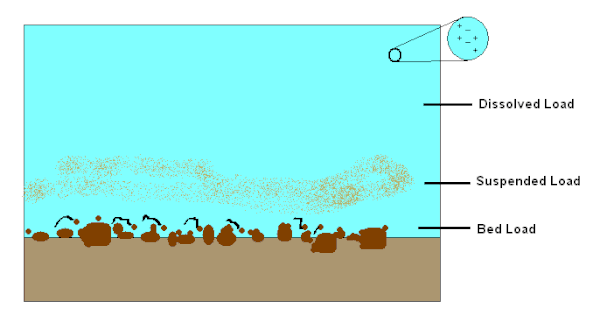Dissolved load is the portion of a stream's total sediment load that is carried in solution, especially ions from chemical weathering. It is a major contributor to the total amount of material removed from a river's drainage basin, along with suspended load and bed load. The amount of material carried as dissolved load is typically much smaller than the suspended load,[1] though this is not always the case, particularly when the available river flow is mostly harnessed for purposes such as irrigation or industrial uses. Dissolved load comprises a significant portion of the total material flux out of a landscape, and its composition is important in regulating the chemistry and biology of the stream water.

The dissolved load is primarily controlled by the rate of chemical weathering, which depends on climate and weather conditions such as moisture and temperature.[2] Dissolved load has many useful applications within the field of geology, including erosion, denudation, and reconstructing climate in the past.
- ^ Alexandrov, Yulia; Cohen, Hai; Laronne, Jonathan B.; Reid, Ian (2009). "Suspended sediment load, bed load, and dissolved load yields from a semiarid drainage basin: A 15-year study". Water Resources Research. 45 (8): W08408. Bibcode:2009WRR....45.8408A. doi:10.1029/2008wr007314. ISSN 0043-1397. S2CID 129669714.
- ^ Grosbois, C.; Négrel, Ph.; Fouillac, C.; Grimaud, D. (2000). "Dissolved load of the Loire River: chemical and isotopic characterization". Chemical Geology. 170 (1–4): 179–201. Bibcode:2000ChGeo.170..179G. doi:10.1016/s0009-2541(99)00247-8. ISSN 0009-2541.